Raw cocaine, the stuff that finds its way to North American cities like New York and across Europe is not produced in the Caribbean. But today the region is awash in the drug fueling a growing population of violent gangs, substance dependency and an underground “dark economy” estimated to be in the billions of dollars. And as the region struggles to overcome crippling poverty, high unemployment, especially among the youth, the Caribbean has now come back as the favorite pipeline and conduit for cocaine (and marijuana) originating in Latin America and bound for U.S cities.
The United Nations estimates that the global drug trade is worth $350 billion with the cocaine trade accounting to just over $85 billion. For the Caribbean as a new favorite route and transshipment hub, cocaine comes from Columbia.
As United States and Mexican anti-drug enforcement agencies clamped down on the cocaine and drug trade in general, since 2013 the Caribbean has increasingly become a hot spot again for drug smuggling into the United States as a new generation of “Cocaine Cowboys” plows the seas in fast boats, called “go-boats,” in search of easy entry points for illicit shipments into the world’s largest consumer market.
About 14 percent of U.S.-bound cocaine shipments – roughly 42 tons – is presently being trafficked through the Caribbean on an annual basis with Puerto Rico and the neighboring Dominican Republic fast becoming the as hubs of the burgeoning trade, say U.S. law enforcement. As cocaine pours largely unopposed across the border from Colombia, with production in the Andean nation at a record high, organized crime has developed one of the region’s most prolific drug pipelines into the Dominican Republic.
While there are some illegal flights that swing past, the lion’s share of the drug streaks across the Caribbean in go-fast boats. The Dominican Republic offers the drug trade some of the Caribbean’s biggest container ports, a lively tourist sector with commercial flights across the globe, and a booming property and banking sector, ready to wash narco-dollars.
But its not only Jamaica and the Dominican Republic that now makes the Caribbean so attractive to cocaine drug cartels doing business in Latin America. The Caribbean route had fallen from favor since the heady days of the dangerous and violent Medellín Cartel, when Pablo Escobar and his henchmen used the island of Norman’s Cay in the Bahamas to refuel small planes laden to the brim with cocaine, bound for the United States. In the mid-1980s, over 75 percent of the cocaine seized on its way to the United States was taken all across the Caribbean.
Nowadays, with the political, social and economic turbulence n Venezuela, Colombian drug cartels have seized this chaos to enhance and boost their drug supply trade to the southern Caribbean nations while benefitting from shipping opportunities into North America and Europe. It is now an almost regular occurrence to read about large volumes of cocaine seized by both regional and United States coast guard working in tandem to thwart this growing problem.
However, the cocaine drug problems in the southern Caribbean are only the tip of the iceberg. In the north of the Caribbean, the Dominican Republic sits in the very heart of the region. Its allure for cocaine and drug cartels in Colombia and the Caribbean region is that its the most populous nation with a population of 10.5 million and has its strongest economy. For example, in 2018 it topped the Caribbean’s list of popular tourist destinations welcoming over sex million tourists and the dozens of cruise liners. So, from a trade point of view, the Dominican Republic’s six ports make it a regional hub for container shipping. Some of these ports can handle the “neo-Panamax” ships, the largest size able to negotiate up the Panama Canal.
Santo Domingo is one of the oldest, as well as the largest, cities in the Caribbean, with its metropolitan area registering a population of almost three million. Today, it boasts world-class hotels, unique tourist resorts, restaurants and casinos—everything that attracts Colombia’s cocaine cartels, including Spanish as a common language. The Dominican Republic has by far the largest economy and GDP in the Caribbean, along with a booming property market, thus offering plenty of money laundering opportunities for drug cartels and regional criminal enterprises.
Today, cocaine shipments from Colombia pass through the southern Caribbean bound for the Dominican Republic enroute to North America and Europe. For departing cocaine shipments, the Dominican Republic has a plethora of different routes to offer. For example, for cocaine bound for the US market, there is Puerto Rico, just 381 kilometers away. As a US territory, if smugglers can get cocaine onto this island, it makes for an easier ride to the mainland, being inside the US customs barriers.
The situation is similar in French territories of Martinique and Guadeloupe for shipments into mainland Europe. British overseas Caribbean territories like Anguilla, Bermuda, the British Virgin Islands, as well as former colonies like Jamaica, are springboards into the United Kingdom. Yet thanks to linguistic advantages and a significant Dominican diaspora, Spain is still the hub for Latin American/Columbian cocaine into Europe for drugs leaving the Dominican Republic. Spain has traditionally been the European nation with the highest annual cocaine seizures by law enforcement.
The free movement of CARICOM nationals as part of the regional integration movement, while laudable and admirable, has spawned many unintended consequences. Crime and collaboration between criminal organizations are now better organized, communicate between each other using high-tech tools and are able to evade law enforcement far easier today. That’s yet another reason why the Dominican Republic (and to some extent neighboring Jamaica) is now a preferred transit nation and hub for cocaine. The increasing sophistication of the native drug trafficking organizations (DTOs) now make for more opportunities for the Caribbean region as a whole.
Before 2016, Dominican criminal organizational and structures used to act principally as cocaine transporters for Colombian and Mexican criminal cartels. Those days are gone. Today, in 2019, Dominican DTOs have moved into the big league. They are now buying cocaine in Venezuela, contracting Venezuelans to make the hazardous journey across the Caribbean, then taking direct control of loads as they hit the island. But the Dominican criminal organizations reach does not end here.
Their DTOs can move drugs up to the eastern seaboard of the United States. There, a large Dominican diaspora sells the drugs, even going down to retail street levels. This means that the Dominicans now control a large number of links in the drug chain, and are able to maximize their profits from each kilogram of cocaine. Dominicans, working with Colombian and Mexican cartels, are also acting as intermediaries for international mafias looking to secure large cocaine loads. International intelligence agencies in Santo Domingo have flagged the growing presence of Russian organized crime figures now active in the Caribbean.
The impact of the cocaine and other drugs on some Caribbean island-nations has been huge. According the United States four Caribbean countries (CARICOM) have been named as as major illicit drug-production countries. The Bahamas, Belize, Haiti and Jamaica were named as major drug-transit countries in the U.S. 2018 Narcotics Control Strategy Report.
According the report, a major illicit drug-producing country is one in which 1,000 hectares or more of illicit opium is cultivated or harvested during a year; or 5,000 hectares or more of illicit cannabis is cultivated or harvested during a year. The report notes that Jamaica remains the largest Caribbean supplier of marijuana to the United States and the Caribbean islands.
It states, “although cocaine and synthetic drugs are not produced locally, Jamaica is a transit point for drugs trafficked from South America to North America and other international markets.” The report went on to indicate that drugs flow from and through Jamaica by maritime conveyance, air freight, human trafficking and private aircraft.
Jamaica is a transit point for cocaine moving from Central America to the United States, and some drug trafficking organizations exchange marijuana for cocaine.




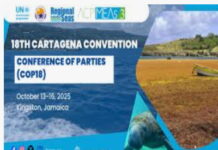










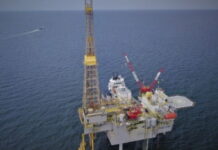

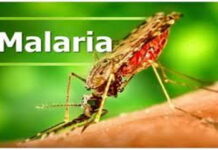









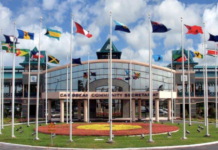













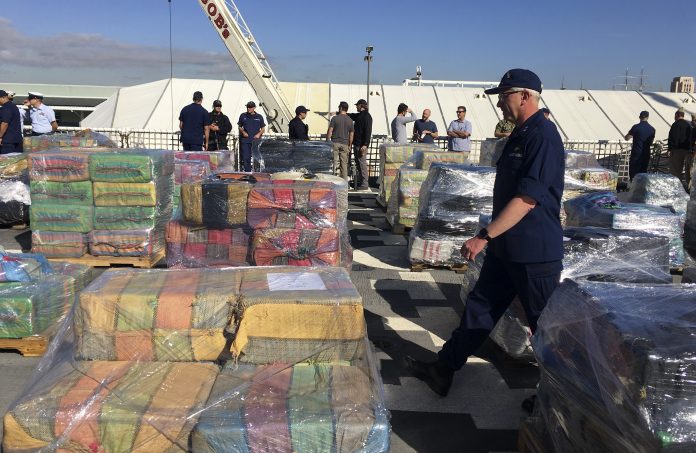

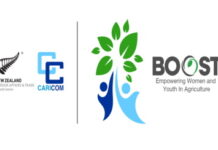







 and then
and then